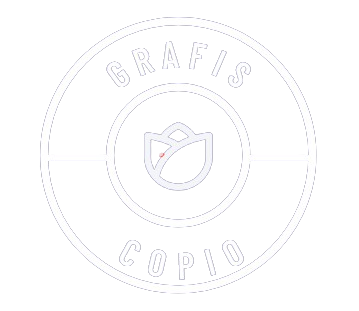Are you curious about the elements of typography in graphic design? Well, buckle up because we’re about to dive into the fascinating world of fonts, hierarchy, spacing, alignment, readability, and their impact on design. In this article, we’ll explore how these elements come together to create visually stunning and effective designs. So, get ready to unleash your creativity and discover the secrets behind the art of typography. Let’s embark on this typographic journey together!
Font Selection
When choosing fonts for your graphic design projects, consider the overall aesthetic and readability of the typefaces. One important factor to consider is whether to use a serif or sans serif font. Serif fonts have small decorative lines at the ends of the characters, while sans serif fonts have clean, straight lines. Serif fonts are often associated with a more traditional and formal look, while sans serif fonts give a more modern and sleek feel. Both have their merits, so it ultimately depends on the message you want to convey.
Typography trends also play a significant role in font selection. Currently, minimalism and simplicity are popular, with clean and easy-to-read fonts being favored. However, trends can change quickly, so it’s important to stay updated and adapt accordingly. Experimenting with different fonts can help you find the perfect balance between style and readability for your specific design.
Hierarchy in Typography
When it comes to hierarchy in typography, there are three key points to consider. Firstly, visual importance indicators help guide the viewer’s attention to the most significant elements on the page. Secondly, organizing content visually allows for a clear and intuitive reading experience. Lastly, establishing a clear information hierarchy ensures that the most important information stands out and is easily digestible. Understanding these points will help you create visually appealing and effective designs.
Visual Importance Indicators
To establish visual hierarchy in graphic design, you must utilize various visual importance indicators. One of the most effective indicators is visual contrast. By using contrasting elements such as size, color, and texture, you can guide the viewer’s attention and create a clear hierarchy of information. Another important technique is emphasis. This involves using different visual cues, such as bold or italicized text, to draw attention to specific elements. By emphasizing certain elements, you can create a sense of importance and guide the viewer’s eye through the design. Additionally, spacing and alignment can also be used to create visual hierarchy. By strategically placing elements and aligning them in a particular way, you can create a visual flow that leads the viewer’s eye from one important element to the next.
Organizing Content Visually
You can organize content visually in graphic design by establishing a clear hierarchy. This hierarchy helps guide the viewer’s eyes and attention to the most important elements of your design. To achieve this, consider the following:
- Content grouping: Arrange similar elements together to create visual coherence and make it easier for the viewer to understand the relationship between different pieces of information.
- Visual storytelling: Use visual cues such as size, color, and placement to tell a story and guide the viewer through your design. By strategically highlighting key elements, you can create a narrative flow that engages and informs the audience.
- Contrast: Utilize contrasting elements, such as font weights or colors, to differentiate between different levels of importance. This contrast helps establish a clear visual hierarchy and ensures that important information stands out.
Establishing Clear Information Hierarchy
One important aspect of establishing a clear information hierarchy in graphic design is ensuring that your typography effectively communicates the relative importance of different elements. To achieve this, you can utilize font pairing and color psychology to enhance the visual hierarchy of your design.
Font pairing involves selecting complementary fonts that work well together to create contrast and distinction between different levels of information. For example, you might use a bold and attention-grabbing font for headings, while opting for a more subdued and readable font for body text. This contrast in typography helps guide the viewer’s eye and highlights the importance of different elements.
Color psychology plays a significant role in establishing information hierarchy as well. By strategically using color, you can draw attention to specific elements and create a sense of hierarchy. For instance, using a bold and vibrant color for headings and a lighter shade for subheadings can make the viewer instantly recognize the relative importance of each element.
To summarize, font pairing and color psychology are essential tools in establishing a clear information hierarchy in graphic design. By using these techniques, you can effectively communicate the relative importance of different elements and guide the viewer’s attention to the most significant information.
Spacing
When considering the elements of typography in graphic design, it’s important to understand the role that spacing plays. Spacing refers to the amount of space between characters, words, and lines of text. It may seem like a small detail, but it can have a big impact on the overall look and readability of your design. Here are three key aspects of spacing to consider:
- Kerning: Kerning refers to the adjustment of space between individual characters. By adjusting the kerning, you can ensure that the letters in a word are evenly spaced, creating a harmonious and visually pleasing effect.
- Line height: Line height, also known as leading, refers to the vertical space between lines of text. It’s important to find the right balance between too little and too much space. Adequate line height helps improve readability and prevents the text from appearing cramped or crowded.
- White space: White space, also known as negative space, refers to the empty space around and between design elements. It allows the eye to rest and helps to create visual balance. By strategically using white space, you can enhance the overall composition and emphasize important information.
Alignment
Aligning your typography is crucial in graphic design to achieve a visually cohesive and professional look. Proper alignment techniques can greatly enhance the overall design of your typography. One effective technique is to use grid systems. Grid systems provide a framework that helps you align your text and other design elements in a balanced and harmonious way.
Grid systems consist of a series of horizontal and vertical lines that create a structure for your design. By aligning your text to these lines, you can create a sense of order and organization. This not only improves the readability of your typography but also creates a pleasing visual rhythm.
There are different types of grid systems you can use, such as a baseline grid or a modular grid. A baseline grid aligns the baseline of your text, while a modular grid aligns the entire text block. You can choose the grid system that best suits your design and experiment with different alignments to find the most effective one.
Remember that alignment is not just about positioning your text. It is also about creating a visual hierarchy and directing the reader’s eye. By aligning your typography carefully, you can guide the reader through your design and emphasize important information.
Readability
To ensure optimal readability in graphic design, you must carefully consider the size and spacing of your typography. The typographic legibility of your design plays a crucial role in how easily your audience can read and comprehend the information you are presenting. Here are three key factors to keep in mind:
- Font size: Choosing the right font size is essential for readability. Too small, and your text becomes difficult to read. Too large, and it can overwhelm your design. Strike a balance by considering the medium and context in which your design will be viewed.
- Line spacing: Adequate spacing between lines of text is crucial for legibility. If the lines are too close together, it can make it challenging to distinguish one line from another. Conversely, too much space can disrupt the flow of reading. Aim for a line spacing that allows the text to breathe while maintaining a natural rhythm.
- Contrast ratios: Contrast between text and background is essential for readability, particularly for individuals with visual impairments. Ensure that there is enough contrast between the color of your text and the background to make it easily distinguishable. Consider using color contrast tools to check the contrast ratios and make adjustments if necessary.
Impact on Design
Consider the impact typography has on your design. Typography goes beyond just selecting a font; it plays a crucial role in conveying your message effectively. One aspect to consider is color psychology. Different colors evoke different emotions and can influence how your design is perceived. For example, using warm colors like red and orange can create a sense of urgency or excitement, while cooler colors like blue and green can generate a feeling of calmness or trust. By carefully selecting the color of your typography, you can enhance the overall impact of your design.
Another important factor to consider is legibility and readability. The font you choose should be easy to read and understand. It should not be too small, too bold, or too decorative, as this can hinder legibility. The spacing between letters and words should also be carefully considered to ensure optimal readability. A well-designed typography will allow your audience to effortlessly absorb the information you are presenting.



